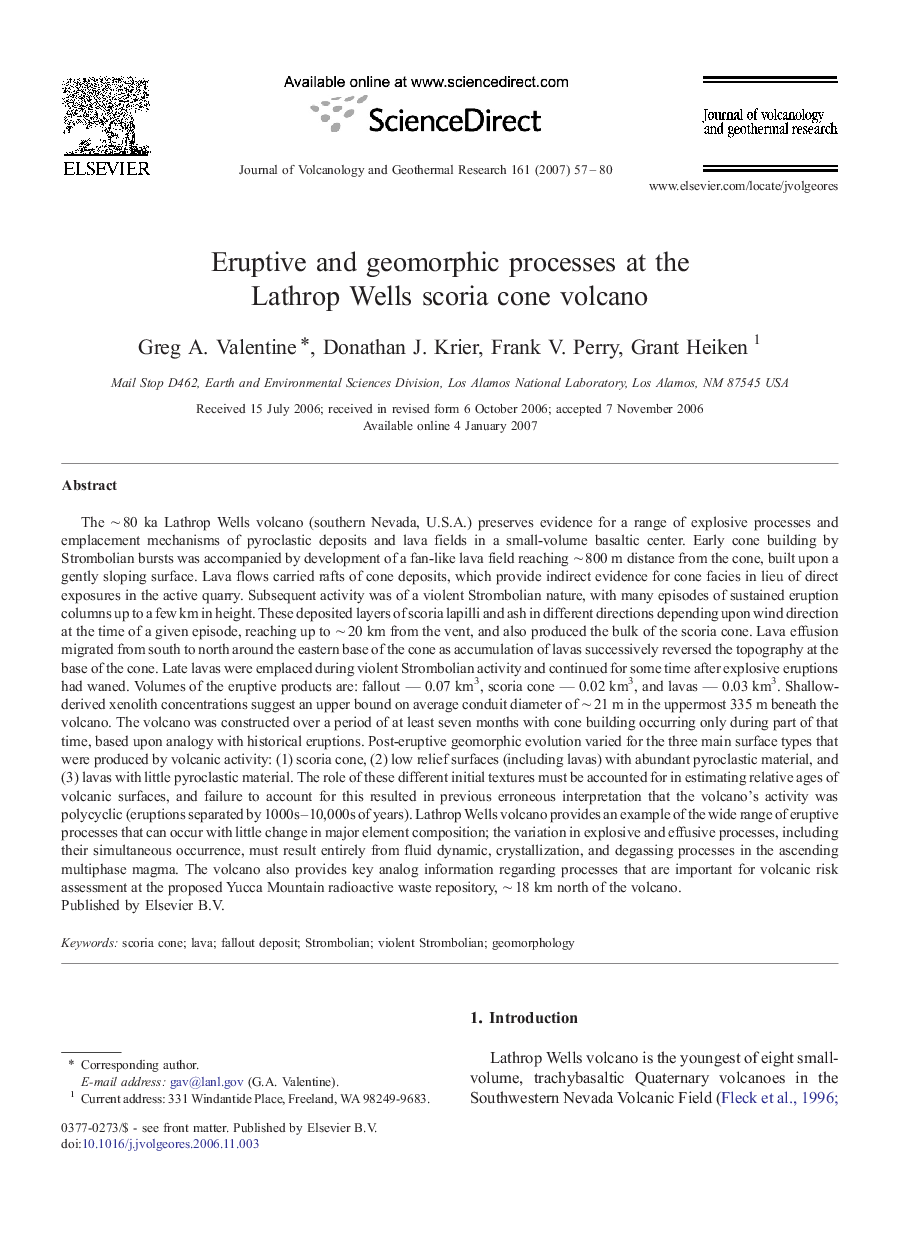| کد مقاله | کد نشریه | سال انتشار | مقاله انگلیسی | نسخه تمام متن |
|---|---|---|---|---|
| 4714876 | 1638466 | 2007 | 24 صفحه PDF | دانلود رایگان |

The ∼ 80 ka Lathrop Wells volcano (southern Nevada, U.S.A.) preserves evidence for a range of explosive processes and emplacement mechanisms of pyroclastic deposits and lava fields in a small-volume basaltic center. Early cone building by Strombolian bursts was accompanied by development of a fan-like lava field reaching ∼ 800 m distance from the cone, built upon a gently sloping surface. Lava flows carried rafts of cone deposits, which provide indirect evidence for cone facies in lieu of direct exposures in the active quarry. Subsequent activity was of a violent Strombolian nature, with many episodes of sustained eruption columns up to a few km in height. These deposited layers of scoria lapilli and ash in different directions depending upon wind direction at the time of a given episode, reaching up to ∼ 20 km from the vent, and also produced the bulk of the scoria cone. Lava effusion migrated from south to north around the eastern base of the cone as accumulation of lavas successively reversed the topography at the base of the cone. Late lavas were emplaced during violent Strombolian activity and continued for some time after explosive eruptions had waned. Volumes of the eruptive products are: fallout — 0.07 km3, scoria cone — 0.02 km3, and lavas — 0.03 km3. Shallow-derived xenolith concentrations suggest an upper bound on average conduit diameter of ∼ 21 m in the uppermost 335 m beneath the volcano. The volcano was constructed over a period of at least seven months with cone building occurring only during part of that time, based upon analogy with historical eruptions. Post-eruptive geomorphic evolution varied for the three main surface types that were produced by volcanic activity: (1) scoria cone, (2) low relief surfaces (including lavas) with abundant pyroclastic material, and (3) lavas with little pyroclastic material. The role of these different initial textures must be accounted for in estimating relative ages of volcanic surfaces, and failure to account for this resulted in previous erroneous interpretation that the volcano's activity was polycyclic (eruptions separated by 1000s–10,000s of years). Lathrop Wells volcano provides an example of the wide range of eruptive processes that can occur with little change in major element composition; the variation in explosive and effusive processes, including their simultaneous occurrence, must result entirely from fluid dynamic, crystallization, and degassing processes in the ascending multiphase magma. The volcano also provides key analog information regarding processes that are important for volcanic risk assessment at the proposed Yucca Mountain radioactive waste repository, ∼ 18 km north of the volcano.
Journal: Journal of Volcanology and Geothermal Research - Volume 161, Issues 1–2, 1 March 2007, Pages 57–80